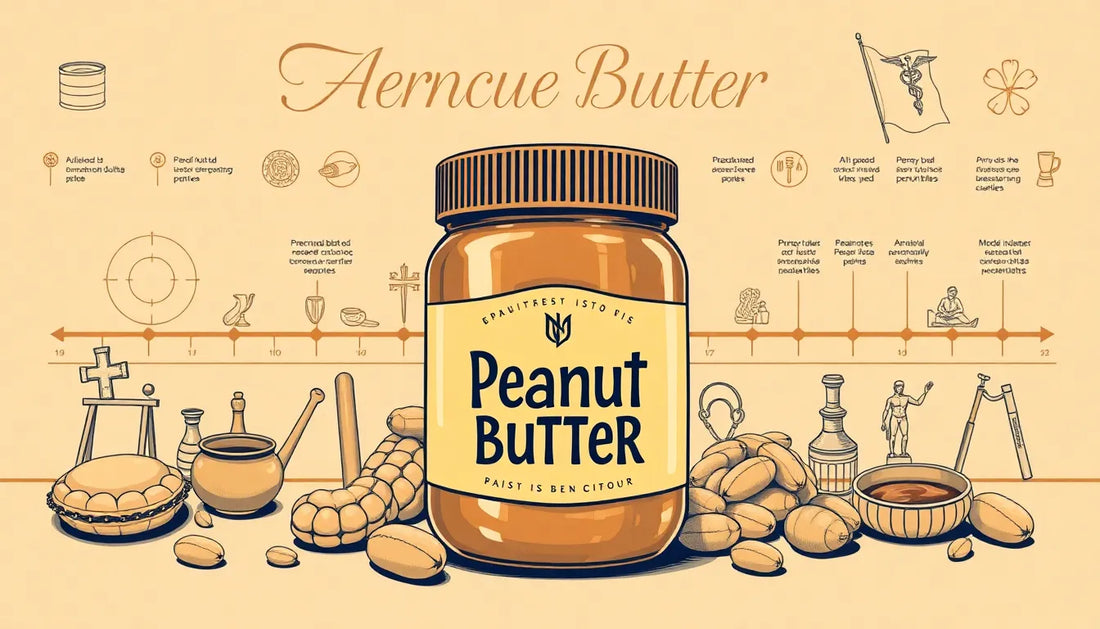
The Surprising History and Health Benefits of Peanut Butter
Peanut butter is a staple in many households, but have you ever wondered about its origins and the health benefits it offers? In this blog post, we'll dive into the fascinating history of peanut butter and explore why it's more than just a tasty spread.
The Origins of Peanut Butter
Peanut butter has been around for centuries, with its roots tracing back to the ancient Incas and Aztecs. These ancient civilizations were the first to grind peanuts into a paste, which they used as a protein-rich food source. However, the modern version of peanut butter as we know it today was not invented until the late 19th century.
In 1884, a St. Louis physician named Dr. John Harvey Kellogg (yes, the same Kellogg who founded the famous cereal company) patented a process for making peanut butter. He saw it as a nutritious alternative to meat for his patients who were following a vegetarian diet. Around the same time, a Canadian named Marcellus Gilmore Edson also patented a method for producing peanut butter.
It wasn't until the early 20th century that peanut butter really started to gain popularity in the United States. In 1904, peanut butter was introduced at the World's Fair in St. Louis, and it quickly became a hit with the public. From there, peanut butter's popularity only continued to grow, and it's now a beloved staple in households around the world.
The Nutritional Benefits of Peanut Butter
Peanut butter is more than just a delicious spread – it's also packed with a variety of essential nutrients. Here are some of the key health benefits of peanut butter:
Protein-Packed
Peanuts are a legume, and they're an excellent source of plant-based protein. In fact, just two tablespoons of peanut butter contain around 8 grams of protein, making it a great choice for vegetarians, vegans, and anyone looking to increase their protein intake.
Healthy Fats
Peanut butter is rich in monounsaturated and polyunsaturated fats, which are considered "healthy" fats. These fats can help lower your risk of heart disease and improve your overall cholesterol levels.
Fiber-Filled
Peanut butter is a good source of dietary fiber, which is important for maintaining a healthy digestive system and promoting feelings of fullness.
Vitamin and Mineral-Rich
Peanut butter is a great source of several essential vitamins and minerals, including vitamin E, magnesium, potassium, and zinc. These nutrients play important roles in supporting overall health and well-being.
Antioxidant Properties
Peanuts contain resveratrol, a powerful antioxidant that can help protect your cells from damage and reduce inflammation in the body.
Smooth vs. Crunchy: Which is Better?
When it comes to peanut butter, there's often a debate between smooth and crunchy varieties. Both have their own unique benefits and appeal to different tastes.
Smooth peanut butter is made by grinding peanuts into a creamy, spreadable paste. It's perfect for those who prefer a silky, uniform texture. Smooth peanut butter is also great for baking, as it blends seamlessly into recipes.
On the other hand, crunchy peanut butter contains small pieces of roasted peanuts, giving it a satisfying crunch. This variety is ideal for those who enjoy a little texture in their peanut butter. Crunchy peanut butter can also be a great topping for things like oatmeal, yogurt, or even ice cream.
Ultimately, the choice between smooth and crunchy peanut butter comes down to personal preference. Both varieties offer the same great nutritional benefits, so you can't go wrong either way.
Peanut Butter Beyond the Sandwich
Peanut butter is a versatile ingredient that can be used in a variety of dishes, both sweet and savory. Here are some creative ways to incorporate peanut butter into your meals:
Peanut Butter Smoothies
Blend peanut butter with your favorite fruits, milk or yogurt, and a touch of honey or maple syrup for a delicious and nutritious smoothie.
Peanut Butter Cookies
Peanut butter is the star ingredient in classic peanut butter cookies, but it can also be used to add richness and flavor to other baked goods, like cakes, brownies, and muffins.
Peanut Butter Sauces and Dips
Mix peanut butter with soy sauce, lime juice, and a touch of honey or brown sugar to create a flavorful sauce for stir-fries, noodle dishes, or as a dip for fresh vegetables.
Peanut Butter Energy Bites
Combine peanut butter with oats, honey, and your choice of mix-ins (like chocolate chips, dried fruit, or nuts) to make portable, nutrient-dense energy bites.
As you can see, peanut butter is much more than just a sandwich spread. Its versatility and health benefits make it a pantry staple that can be enjoyed in a variety of creative and delicious ways.
The Bottom Line
Peanut butter is a beloved food that has been around for centuries. Not only is it delicious, but it's also packed with essential nutrients that can support your overall health and well-being. Whether you prefer smooth or crunchy, peanut butter is a versatile ingredient that can be enjoyed in a variety of sweet and savory dishes.
So, the next time you reach for a spoonful of peanut butter, remember the rich history and impressive health benefits behind this humble spread. Enjoy it as part of a balanced diet, and get creative with new ways to incorporate it into your meals and snacks.

